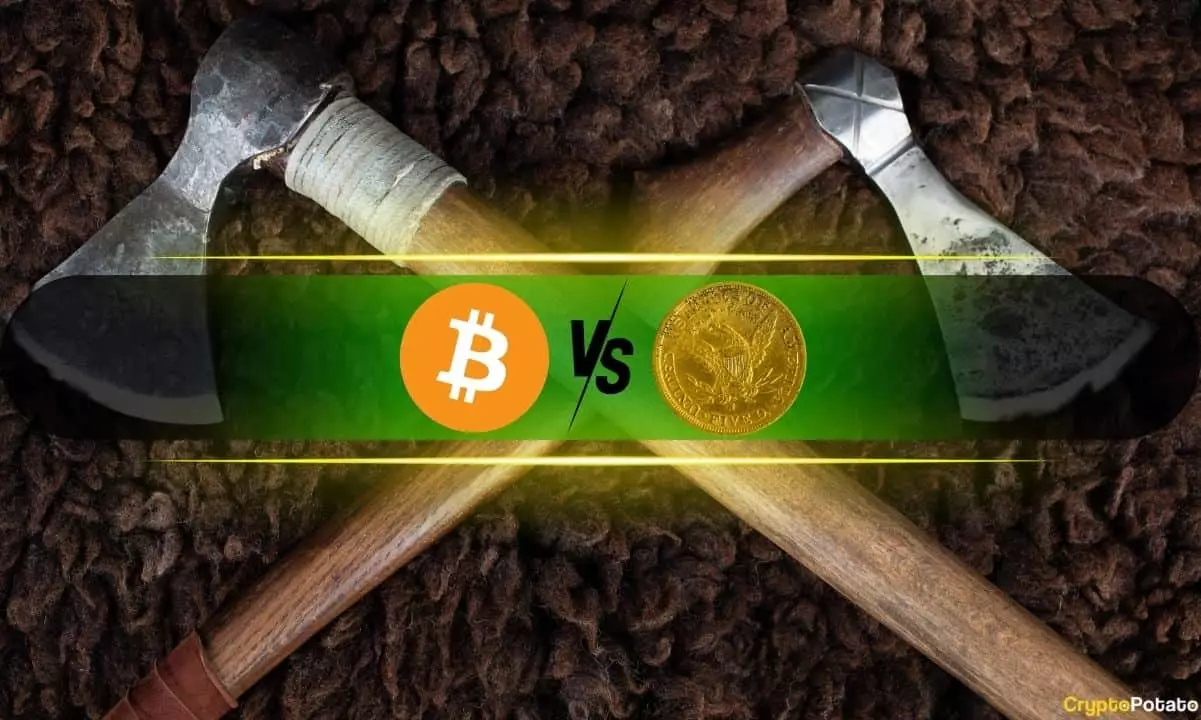In the ever-evolving world of investments, Bitcoin (BTC) and gold have recently manifested strikingly different price trajectories. Over the past six months, gold has encountered a meteoric rise, edging closer to the coveted $3,000 per ounce mark, while Bitcoin has struggled to maintain its footing below the $100,000 threshold. This stark contrast not only raises questions about the future of cryptocurrency but also highlights the broader implications of economic trends and investor sentiment.
Gold’s ascent can primarily be attributed to factors like inflationary pressures in the U.S. economy and geopolitical uncertainties, particularly following President Trump’s contentious re-election. Historically, gold has served as a safe-haven asset—a role it has reclaimed in recent months as investors seek stability amidst tumultuous financial landscapes. Meanwhile, Bitcoin’s stagnation suggests a possible shift in market dynamics, with traditional assets gaining favor during uncertain times.
Several intertwined factors have contributed to gold’s impressive rally. One key element is the steady rise in inflation rates, which tends to erode the purchasing power of fiat currencies. In such an environment, investors typically flock to tangible assets, with gold often being the preferred choice. Additionally, central banks around the globe have increased their gold reserves, bolstering the narrative that gold is an indispensable component of any prudent investment strategy.
Another significant driver is the speculative interest surrounding gold, fueled by analysts and financial experts projecting continued price advancements. Many of these analysts once dismissed gold as a relic in the modern financial system but have since adjusted their views, now forecasting a trajectory where gold might soon break records.
In contrast, Bitcoin’s popularity as a digital asset has surged over the last few years, often seen as a hedge against inflation akin to gold. However, unlike gold, Bitcoin’s performance in face of economic adversity has not been straightforward. The leading cryptocurrency experienced a post-election surge, reaching a peak of nearly $110,000 on Inauguration Day before undergoing a sharp correction.
The financial landscape is often wrought with irrationalities, and this holds especially true in the cryptocurrency sector. Predictions about market movements can be uncertain, as the behaviors of assets like Bitcoin are not solely dictated by economic indicators. The analysis of recent trends shows that despite Bitcoin’s observable downturn, it has previously demonstrated a propensity to defy expectations.
Recent data indicates a decline in demand for Bitcoin, particularly in the U.S. This is evident from the diminishing Coinbase Premium metric and the underwhelming performance of domestic exchange-traded funds (ETFs) linked to Bitcoin. This waning interest poses questions regarding the sustainability of Bitcoin’s previous growth levels. However, history reveals that the cryptocurrency market can experience abrupt shifts. Therefore, it is essential to approach Bitcoin’s short-term outlook with caution, acknowledging that it may be poised to rebound and surge unexpectedly.
As the two assets continue to diverge, many investors find themselves asking whether Bitcoin is facing an existential crisis or if it will find a way to reclaim its narrative as a viable alternative to traditional commodities like gold. The upcoming months are crucial, as market sentiment, regulatory adjustments, and macroeconomic conditions will play pivotal roles in shaping the future for both BTC and gold.
Despite the current trends suggesting a stronger bullish sentiment for gold, it is essential to remember that the cryptocurrency market is characteristically unpredictable. Bitcoin’s storied past has shown that it can swiftly overcome barriers and defy probabilities. Whether driving forward or adjusting to a persistent downward trend, Bitcoin’s journey remains under intense scrutiny.
While gold appears to reign supreme in the present scenario, Bitcoin’s capacity to adapt and surprise remains a compelling aspect that could yet alter the landscape of investment. Investors must maintain a watchful eye, as the future may bring opportunities for both assets that elude current predictions. The financial world is anything but predictable, making it all the more intriguing to observe how Bitcoin may reclaim its narrative as a rival to gold in the face of adversity.

